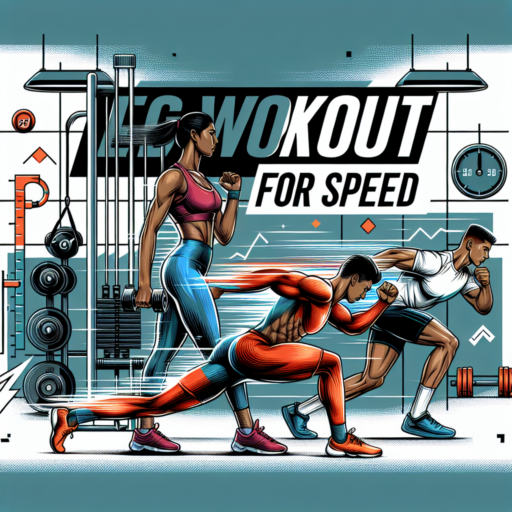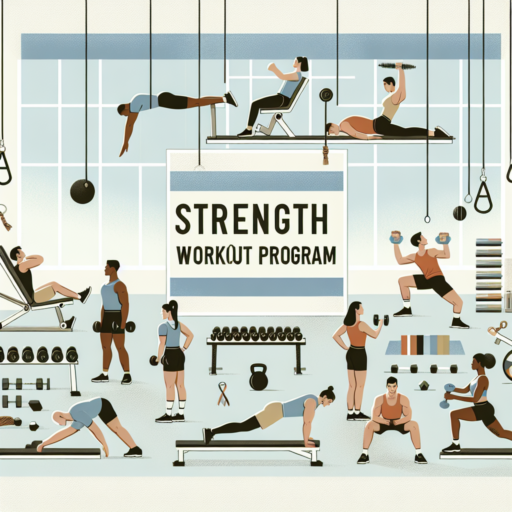How can I train my legs for speed?
Training your legs for speed involves a combination of strength training, plyometrics, and sprinting drills that focus on enhancing your fast-twitch muscle fibers, improving your running form, and increasing your endurance. By dedicating time to specific exercises, you can develop the leg speed necessary for various sports and physical activities.
Strength Training for Powerful Legs
Building a solid foundation through strength training is crucial for increasing leg speed. Exercises like squats, lunges, and deadlifts are essential for developing the muscle strength required for faster movement. These exercises not only enhance the power and explosiveness of your leg muscles but also improve overall body strength, contributing to a more effective training regimen.
Plyometric Exercises for Explosiveness
Plyometric exercises are designed to improve explosive power, crucial for developing speed. Incorporating exercises such as jump squats, box jumps, and skipping drills into your routine can dramatically increase your leg speed. These high-intensity exercises stimulate the fast-twitch muscle fibers, leading to improved explosiveness and speed.
Incorporating regular sprint training into your routine is also essential. Practicing different sprinting drills, such as interval sprints and hill sprints, can significantly enhance your leg speed by improving your stride length and frequency. Remember, consistency is key, and gradually increasing the intensity of these workouts will yield the best results for enhancing your leg speed.
What workouts improve speed?
Improving speed is a common goal for athletes across various sports, from sprinters to soccer players. The key to enhancing your speed lies in focusing on specific types of workouts that target not only your leg muscles but also your overall explosiveness and endurance. By incorporating these exercises into your training regimen, you can work towards achieving quicker reflexes and faster sprint times.
High-Intensity Interval Training (HIIT)
High-Intensity Interval Training, or HIIT, involves short bursts of intense activity followed by periods of rest. This type of training is incredibly beneficial for improving speed because it pushes your body to adapt to both the anaerobic and aerobic demands of fast-paced exercises. By simulating the stop-and-start actions common in many sports, HIIT can increase your sprinting speed and improve your recovery time between sprints.
Plyometric Exercises
Plyometric exercises are designed to increase power and explosiveness, which are critical for developing speed. Incorporating plyometric drills, such as jump squats, box jumps, and bounding, can improve your muscle strength and reaction time. These activities encourage your muscles to exert maximum force in short intervals, leading to significant improvements in your acceleration and speed over time.
Sprint Training
At the core of speed improvement is sprint training. Sprint workouts, ranging from short 50m dashes to longer 200m runs, help condition the body to increase stride length and frequency. By focusing on maximizing your sprinting technique through regular, focused sprint training, you can enhance your fast-twitch muscle fibers’ efficiency, which plays a pivotal role in improving overall speed.
No se han encontrado productos.
What leg muscle gives you speed?
When we talk about speed, it’s crucial to understand the complex interplay of muscles at work, especially in the leg. However, one muscle stands out due to its significant role in propelling us forward faster: the Rectus Femoris. This key component of the quadriceps group is not just paramount for knee extension but is pivotal in accelerating the body forward from a static position or during the push-off phase in running.
The Rectus Femoris works in conjunction with other muscles in the leg to achieve maximum velocity. Among these, the hamstring and calf muscles also play critical roles in speed development. The synergy between the powerful extension of the knee through the quadriceps and the forceful contraction of the calf muscles enables the rapid propulsion required for sprinting.
Understanding and training the Rectus Femoris is crucial for athletes aiming to enhance their speed. Exercises targeting this muscle, such as squat jumps, lunges, and high knee sprints, can improve the explosive power necessary for rapid acceleration. Additionally, a focus on the complementary action of the hamstrings and calf muscles will support balanced development, reducing the risk of injury and optimizing performance in speed-based activities.
Does leg day increase running speed?
Integrating leg workouts into your fitness regimen is more than just about building muscle or achieving an aesthetic look; it’s a foundational step towards enhancing your running speed. The correlation between strength training, focusing on the legs, and improved running performance is backed by evidence, suggesting a direct impact on speed.
Unlocking the Elements of Speed
Strength training, particularly exercises that target the lower body, is pivotal in developing the power and explosiveness necessary for faster running speeds. Exercises such as squats, deadlifts, and lunges not only enhance the muscle mass and strength in your legs but also improve your overall running mechanics. By reinforcing the core and leg muscles, athletes can push off the ground more forcefully, thereby increasing their stride length and speed.
Contribution of Plyometrics
Plyometric training, a subset of leg day exercises, involves jump and speed drills that accentuate explosive power. Incorporating plyometrics into your workout can significantly contribute to faster running times by improving your legs’ reactive strength and efficiency. This type of training makes the muscles more adept at storing and releasing energy quickly, allowing for swifter movements and reduced ground contact time during running.
The symbiotic relationship between leg day and running speed is undeniable. However, the journey to faster speeds isn’t solely dependent on the amount of weight you can squat or lunge; it’s equally about the diversity and specificity of your workout routines. Tailoring your leg exercises to mimic running movements can bridge the gap between strength gains in the gym and performance enhancements on the track or road.




